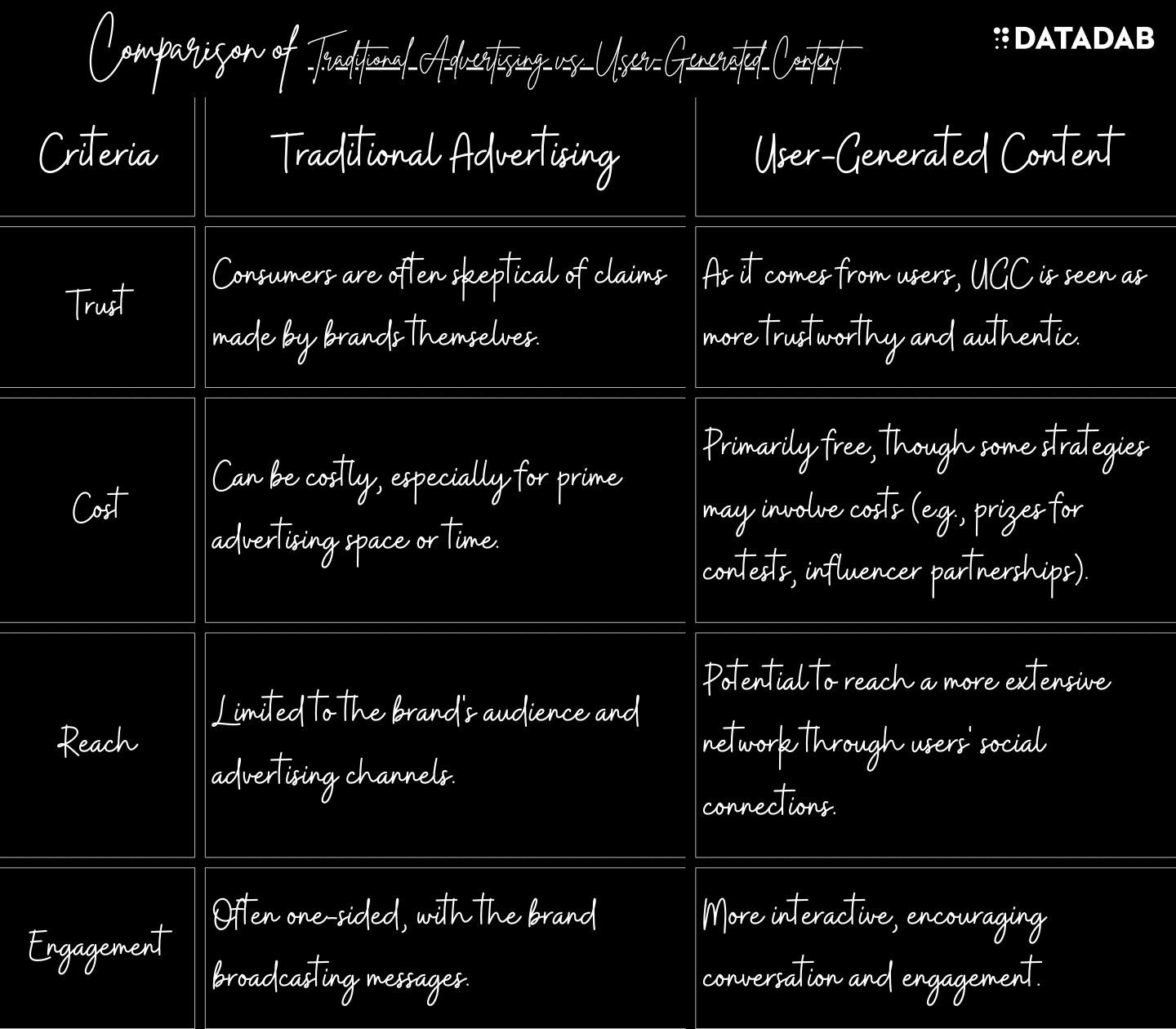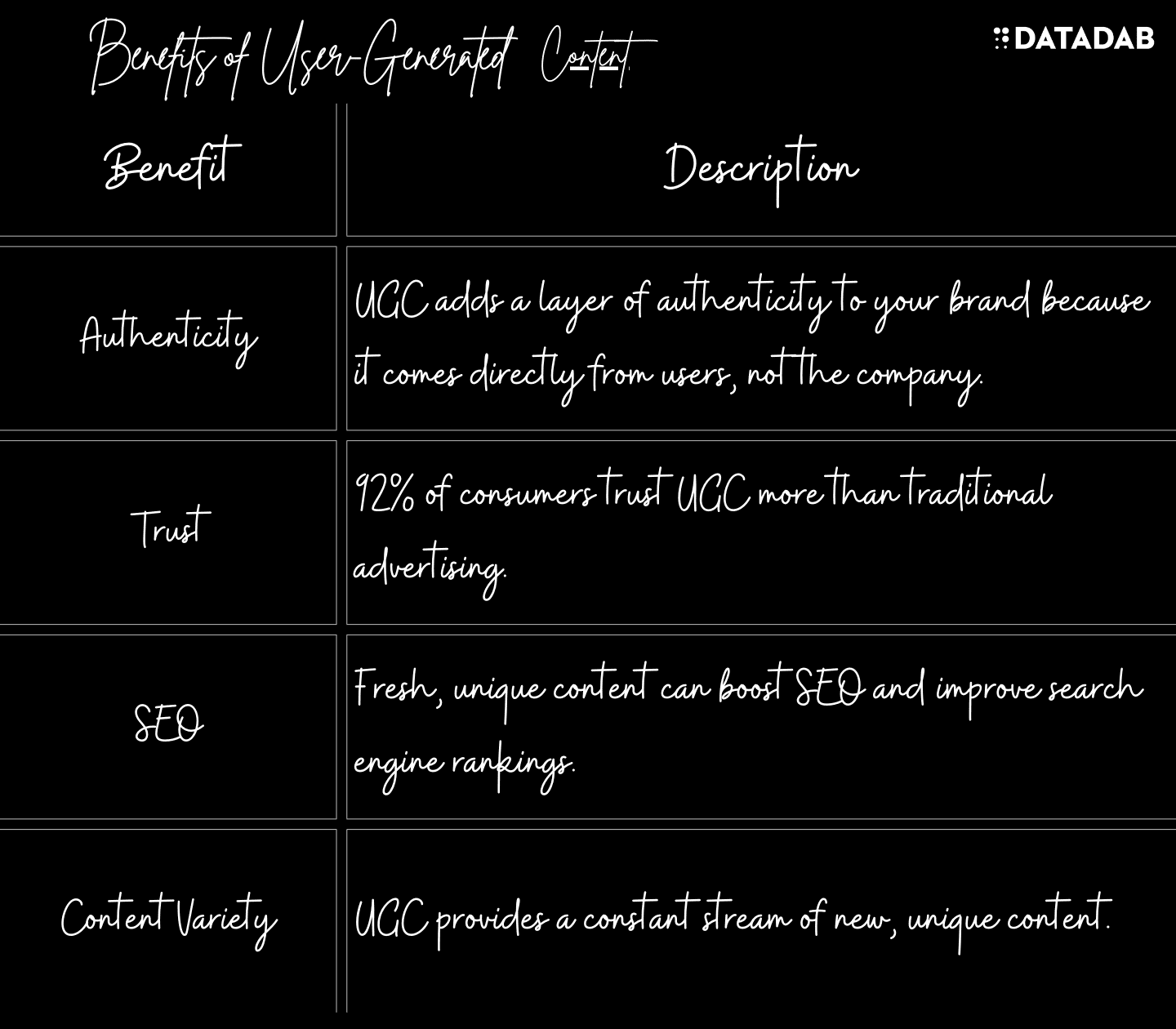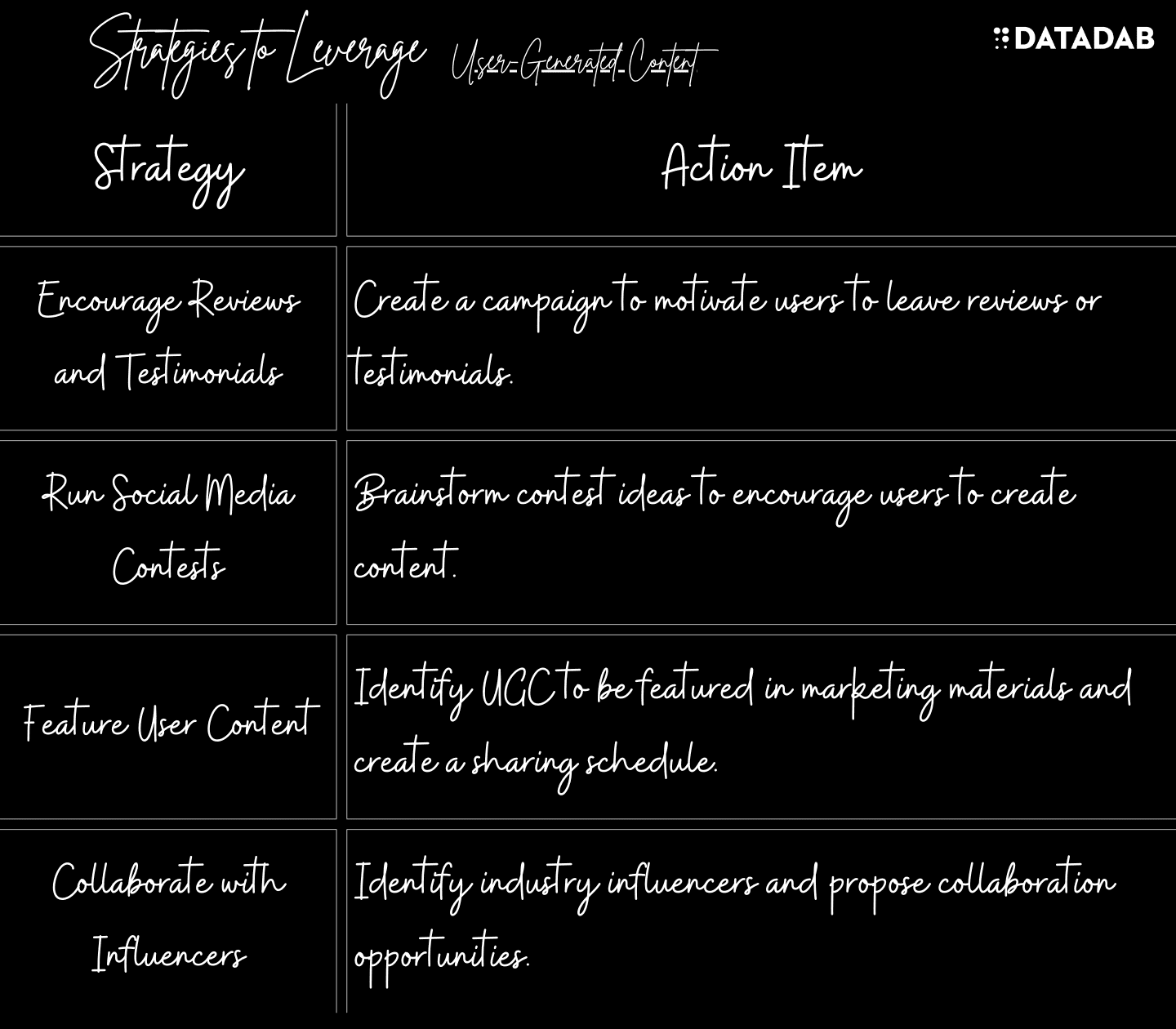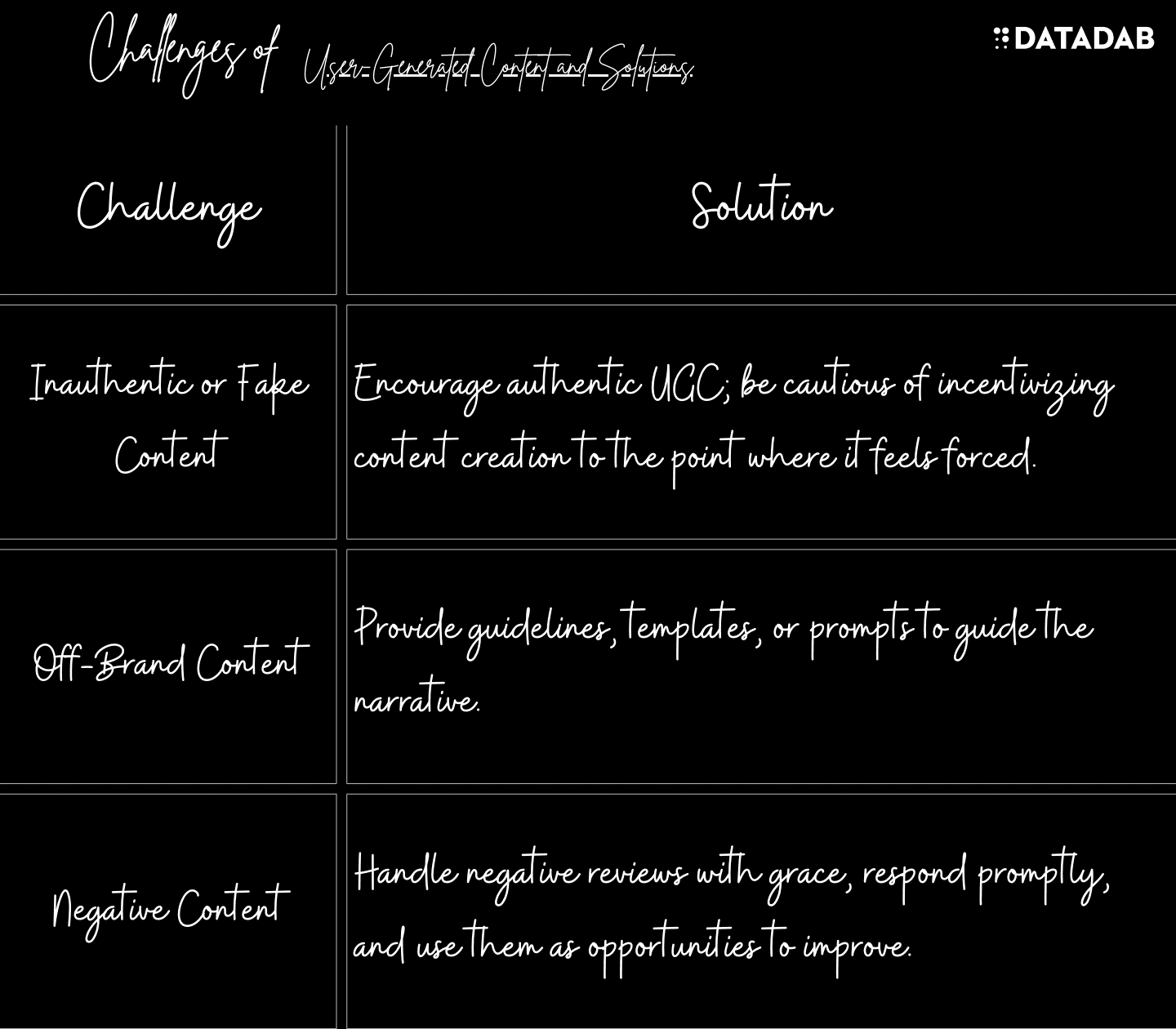"Let your users tell your story. Their voices resonate louder and clearer in the hearts and minds of potential customers."
Consumers are increasingly bombarded with ads and marketing messages, and standing out is quite a challenge. You may be grappling with this situation every day. But what if I told you there's a secret weapon that you probably already have? And it works really well. That weapon is user-generated content (UGC).

UGC is any form of content, such as images, videos, text, and audio, that have been posted by users on online platforms such as social media and review sites. It's not produced by the companies themselves, but by their fans and followers. In other words, it's a public endorsement of your product or service.
Now, let's dive into the crux of it.

Why User-Generated Content?
Let's kick off with some impressive stats:
- According to a 2017 study by BrightLocal, 85% of consumers trust online reviews as much as personal recommendations.
- 70% of consumers will look at up to four reviews or testimonials before making a purchase decision, according to Nielsen.
These figures underscore the potency of UGC and its significant role in shaping consumer behavior.
But why is UGC so impactful?
Authenticity
Consumers are increasingly cynical about advertising, authenticity is key. UGC is perceived as more trustworthy and genuine than brand-created content because it comes from people who have no vested interest in promoting the product or service.
Social Proof
We are social creatures, and we tend to follow the herd. Seeing others use and endorse a product or service can greatly influence our purchase decisions. This psychological phenomenon is known as social proof.
SEO Benefits
Search engines love fresh, original content. UGC, especially reviews and testimonials, can provide a steady stream of unique content that can help boost your SEO efforts.
So how can you, as a SaaS marketer, use UGC in your product marketing?

Strategies to Use User-Generated Content
1. Encourage Reviews and Testimonials
The first step is to encourage your users to leave reviews and testimonials. These can be on your website, on review sites like G2 or Capterra, or on social media platforms.
Example: Slack, a popular collaboration tool, showcases customer testimonials on their homepage. They highlight how companies of different sizes and industries benefit from using their product.
2. Run Social Media Contests
Social media contests are a great way to incentivize your audience to create and share content about your product. These contests can take many forms, like photo contests, caption contests, or even meme contests.
Example: Salesforce, a cloud-based software company, regularly runs social media contests where they encourage users to share their success stories or experiences using the product. The best entries win prizes, but all participants help spread the word about Salesforce.
3. Feature User Content in Your Marketing Material
Once you start receiving UGC, don't just let it sit there. Share it on your social media channels, feature it in your newsletters, use it in your ads. The more you showcase user content, the more others will be encouraged to create and share their own.
Example: Adobe often features user-generated designs on their Instagram page, along with a credit to the creator. Not only does this showcase the capabilities of Adobe's software, but it also incentivizes more users to share their own designs in the hopes of being featured.
4. Collaborate with Influencers
Influencers have a ready audience that trusts their opinions. Collaborating with influencers in your industry can help you tap into this trust and generate a ton of UGC in the process.
Example: HubSpot has collaborated with several marketing influencers
to facilitate webinars, create educational content, and promote their product. They use their platform's features to streamline the collaboration process, from identifying the right influencers to managing and tracking collaborations, ensuring seamless and impactful campaigns.

Challenges and Pitfalls to Avoid
While UGC can bring significant benefits, it's not without its challenges. Here are some pitfalls to avoid:
Inauthentic or Fake Content: Encourage authentic UGC, and be wary of incentivizing content creation to the point where it feels forced or fake.
Off-Brand Content: While you can't control everything users post about your product, you can guide the narrative by providing guidelines, templates, or prompts.
Negative Content: Not all UGC will be positive. Handle negative reviews or comments with grace, respond to them promptly, and use them as opportunities to improve.
Wrapping Up
User-generated content is a powerful tool in the SaaS marketer's toolbox. It provides social proof, enhances authenticity, boosts SEO, and provides fresh, unique content for your marketing efforts. By actively encouraging and promoting UGC through strategies like reviews, social media contests, and influencer collaborations, you can improve your brand and connect with your audience in a more meaningful way.
Remember, the goal is not just to get people to talk about your product, but to foster genuine conversations and build lasting relationships with your users. In the end, it's these relationships that will drive growth and success for your SaaS product.
FAQ
Q: What exactly is User-Generated Content (UGC)?
A: User-Generated Content, or UGC, refers to any content related to a brand that is voluntarily produced by its customers or users. This can include a wide range of content such as reviews, testimonials, social media posts, blog articles, videos, podcasts, and more. Unlike traditional advertising content produced by the brand itself, UGC is created by people who use the product or service, making it a powerful tool for authentic marketing and building trust with potential customers.
Q: Why is UGC important in product marketing?
A: UGC plays a vital role in product marketing for several reasons:
- Authenticity: UGC comes directly from users, not the company, adding a layer of authenticity that traditional advertising often lacks.
- Trust: Consumers tend to trust UGC more than traditional advertising. In fact, 92% of consumers trust organic, user-generated content more than they trust traditional advertising.
- Engagement: UGC encourages greater engagement, as it often prompts conversations among users.
- SEO: Fresh, unique content from users can boost SEO and improve search engine rankings.
Q: How can I encourage my users to create more UGC?
A: There are several strategies to encourage your users to create more UGC:
- Incentivize: Run contests or offer rewards for users who share their experiences with your product.
- Highlight User Content: Showcasing user content on your own platforms can motivate other users to share their own experiences in hopes of being featured.
- Ask for Reviews: Simply asking your users to leave a review can often yield positive results.
Q: How can I use UGC in my marketing campaigns?
A: There are numerous ways to incorporate UGC into your marketing campaigns:
- Social Media: Share user posts on your own social media platforms.
- Website: Incorporate user reviews and testimonials into your website content.
- Email Marketing: Highlight user stories or reviews in your email newsletters.
- Advertising: Use UGC in your advertising campaigns to add authenticity.
Q: How can I ensure the UGC aligns with my brand message?
A: While you cannot fully control what users say about your product, you can guide the narrative by providing templates, prompts, or guidelines for UGC. This can be particularly helpful when running a UGC campaign or contest.
Q: What are some potential challenges with UGC, and how can I overcome them?
A: Some potential challenges with UGC include handling negative content, ensuring the content aligns with your brand, and dealing with inauthentic or fake content. To overcome these challenges, it's important to:
- Respond promptly and professionally to negative content.
- Provide guidelines or prompts to steer users towards creating on-brand content.
- Encourage authentic UGC and be cautious of incentivizing content creation to the point where it feels forced.
Q: How does influencer marketing tie into UGC?
A: Influencer marketing is a type of UGC where influential individuals create content about your product. Their followers, who often trust and value the influencer's opinion, may be more likely to try your product based on the influencer's recommendation. This can significantly increase your product's reach and visibility.
Q: How can I find the right influencers to collaborate with?
A: Finding the right influencers requires a strategic approach:
- Define Your Goals: Be clear on what you want to achieve from the collaboration.
- Identify Your Target Audience: Understand who you want to reach through the influencer's platform.
- Research Influencer Niches: Look for influencers whose content aligns with your brand.
- Evaluate Engagement and Authenticity: Check if the influencer's followers actively engage with their content and if their interactions are genuine.
- Analyze Past Collaborations: Review the influencer's previous partnerships and their alignment with other brands.
- Establish Relationships: Reach out personally to influencers, expressing interest in collaborating and emphasizing why they’re a great fit for your brand.
Q: How can I track the success of my UGC and influencer marketing efforts?
A: Tracking the success of your UGC and influencer marketing efforts involves monitoring key metrics such as:
- Engagement: Likes, shares, comments, and mentions.
- Reach: The number of people who saw the content.
- Conversions: The number of people who took the desired action after seeing the content (e.g., website visits, sign-ups, purchases).
- Return on Investment (ROI): The financial gain from the campaign compared to its cost.
You can use analytics tools provided by social media platforms, Google Analytics for website traffic, and specialized influencer marketing platforms to track these metrics.
Q: Can I use UGC without the user's permission?
A: While UGC is publicly available, it's important to always ask for the user's permission before using their content in your marketing materials. Not only is this a best practice from a legal perspective, but it also respects the user's rights and can help build trust. It's as simple as sending a quick message asking if you can share their content, and most users will be thrilled to have their content featured by your brand.






